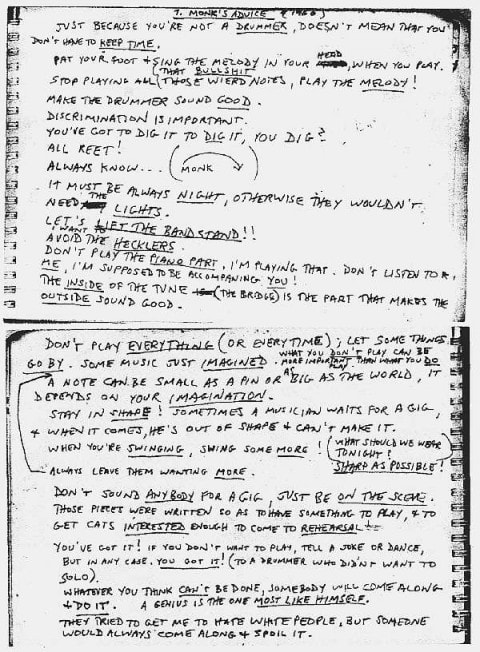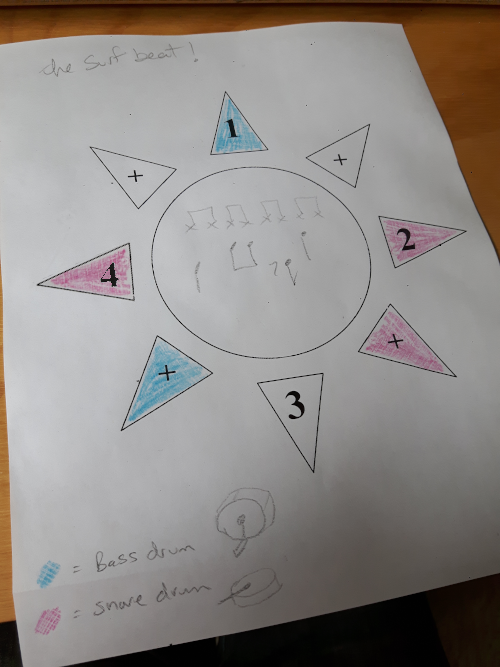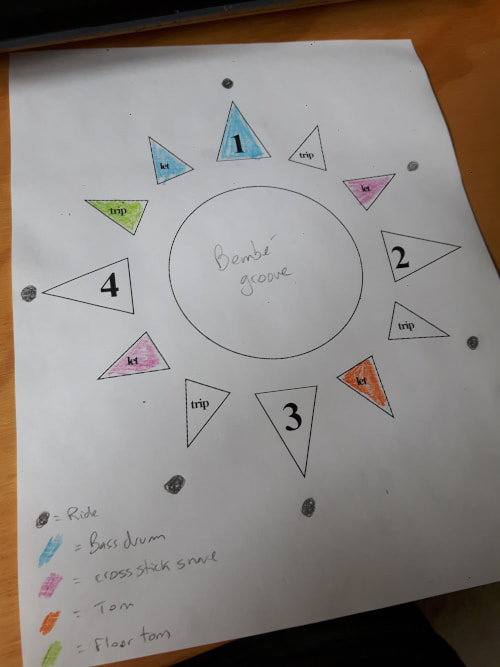Perennial nuggets of wisdom on improvisation, performing, and living a musical life from the great pianist and composer Thelonious Monk - as heard and recorded by soprano saxophonist Steve Lacy during his tenure in one of Monk's band. This has been saved on my phone for a really long time. I often go back to it. Some of my favourites:
"Don't play everything (or everytime); let some things go by"
"A note can be as small as a pin or as big as the world, it depends on your imagination"
"You got it! If you don't want to play, tell a joke or dance, but in any case, you got it! (to the drummer who didn't want to solo)"
"Don't play everything (or everytime); let some things go by"
"A note can be as small as a pin or as big as the world, it depends on your imagination"
"You got it! If you don't want to play, tell a joke or dance, but in any case, you got it! (to the drummer who didn't want to solo)"



 RSS Feed
RSS Feed